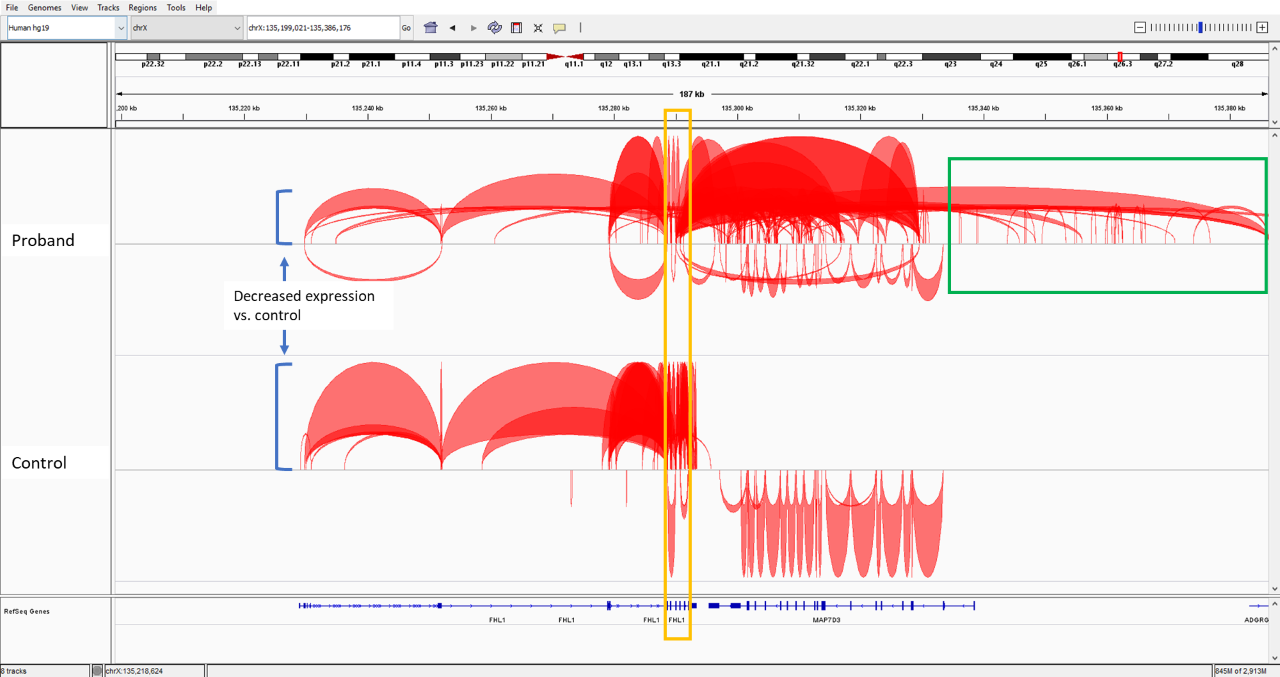- Home
- Resources
- Case Studies
- Rare Disease Day Case 1
Rare Disease Day Case 1
Patient Clinical Information:
The proband is a 16-year-old male with increased muscle tone, flexion contractures, kyphosis of the thoracic region, muscle weakness, and dysphonia (difficulty speaking due to physical limitation of mouth). Previous testing at an outside laboratory revealed an exon 7 deletion in the FHL1 gene that was classified as a VUS.
Family History:
Family history fits clinical features of abnormalities in the FHL1 gene.
Testing Ordered:
Gene-Specific RNA Sequencing Targeted Analysis
Genetic Findings:
The Gene-Specific RNA Sequencing of the FHL1 gene confirmed an exon 7 deletion. Junctions to the wild-type exon 7 acceptor splice site location were absent, and multiple novel aberrant splicing junctions were detected distal to the location of the wild-type exon 7. Additionally, the expression of FHL1 in the sample was determined to be significantly reduced compared to tissue match comparators.
Outcome:
The findings confirm a reduction in RNA, which would affect protein production and thus be responsible for the patient’s symptoms. The FHL1 gene is associated with X-linked Emery-Dreifuss muscular dystrophy (EDMD). Emery-Dreifuss muscular dystrophy is a neuromuscular condition characterized by joint contractures, progressive muscle weakness and wasting, and cardiac manifestations. It may be inherited in an autosomal dominant or X-linked recessive manner.1 For this case, the RNA studies were key to displaying loss of function of FHL1 and establishing the diagnosis for the patient and the family. For more information on EDMD, visit https://www.ncbi.nlm.nih.gov/books/NBK1436/.

Figure 1: The above graphic shows a zoomed in view of the RNA signature of the proband in comparison to a tissue-matched control. You can see the yellow box indicating a missing splice site, confirming the exon 7 deletion in the FHL1 gene. Decreased expression is visible by the height of the red loops, shorter
in the proband than in the control track. The green box indicates the novel aberrant splicing patterns found in the proband.
1. Bonne, G., Leturcq, F. and Yaou, R., 2004. Emery-Dreifuss Muscular Dystrophy. [online] Ncbi.nlm.nih.gov. Available at: <https://www.ncbi.nlm.nih.gov/books/NBK1436/> Accessed 25 January 2022

